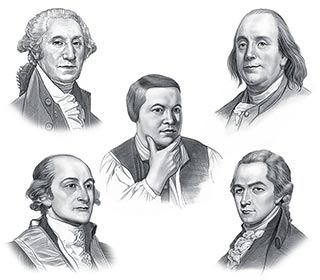Separatists were a group of Puritans who advocated total withdrawal from the Church of England. The Separatists wanted the freedom to worship independently from English authority. Their quest for religious freedom took the Pilgrim Fathers to Colonial America where they had set their sights on New England which they had read about in a book called 'A Description of New England'. The author of the book was John Smith, famous for founding the first colony in Jamestown.
Pilgrim Fathers - History Timeline
Discover interesting facts and information about the Pilgrim Fathers via this fast source of information - a History Timeline of the Pilgrim Fathers. For additional facts and information about their religion refer to the Similarities and the Differences between the Pilgrim and the Puritan.
1600
The Pilgrim Fathers, or Pilgrims, were a group of religious reformers, or separatists, in Scrooby, Nottinghamshire, England led by pastor John Robinson, church elder William Brewster and William Bradford.
1602
Scrooby Manor, William Brewster's home, became a meeting place for the dissenting Puritans.
1606
The group formed the Separatist Church of Scrooby
1607
The Scrooby congregation is persecuted by Tobias Matthew, Archbishop of York. Their homes were raided several members of the Scrooby separatists were imprisoned
1608/9
Following the persecution many of the Scrooby separatists leave England for Amsterdam in the Netherlands and move on to Leiden in the south of the Netherlands
1616
John Smith publishes his book "A Description of New England"
1618
One of the Scrooby separatists, the church elder William Brewster, criticizes the the King of England and the Anglican Church. Authorities in England go to the Netherlands to arrest Brewster but he escapes arrest.
1618
The congregation of the Scrooby separatists decide to leave Europe to escape religious prosecution and set their sights on New England, as described by John Smith
1618/19
The congregation of the Scrooby separatists obtain a land patent from the London Virginia Company which allows them to settle at the mouth of the Hudson River. They then sought financing through the Merchant Adventurers, a group of businessmen who principally viewed the colony as a means of making a profit. Upon arriving in America, the Pilgrims began working to repay their debts.
1618/19
The Scrooby separatists obtain financing for their journey through the Merchant Adventurers, a group of businessmen who principally viewed the colony as a means of making a profit. The men who would become the Pilgrim Fathers agree to repay their debts when they reach America.
1619
Two ships, the Mayflower and Speedwell, are prepared to take the Scrooby separatists to America
1620
July 1620: The Scrooby separatists with their families and the other colonists board the Speedwell in July 1620 in the Dutch port of Delfshaven
1620
The Speedwell travels to Southampton, England, to rendezvous with the Mayflower to pick up supplies and additional passengers
1620
July 15: The Speedwell, with 30 passengers, and the Mayflower, with 90 passengers, leave Southampton
1620
The Speedwell leaks and the Pilgrim Fathers and the other colonists have to go to Plymouth in England for repairs. In the end the Speedwell is not deemed sea-worthy.
1620
There are rumors that that the master of the Speedwell had intentionally sabotaged his ship to avoid having to make the treacherous voyage to North America. Some passengers abandon their attempt to emigrate, whilst others join the over crowded Mayflower. The passengers total 102 people.
1620
September 6, 1620: The Mayflower leaves Plymouth bound for North America
1620
1620 - The Pilgrims establish their own government, the basis of which was the Mayflower Compact, which they drafted on their journey to the New World on the Mayflower
1620
October: The journey on the Mayflower lasts eight weeks before the colonists make their first landfall, on the tip of Cape Cod
1620
December: The Mayflower passengers select a coastal site suitable for their settlement. They name it New Plymouth, after the English town from which the Mayflower departed.
1620
December 21, 1620: The Pilgrim Fathers set foot on the new land
1620/21
Winter: The pilgrims suffered a terrible winter. Many died of disease and others from the harsh conditions without adequate shelter. 45 of the 102 Pilgrims died the first winter and were buried on Cole's Hill
1621
March 16, 1621: the first formal contact with the Native American Indians. The tribe was the Wampanoag who were led by Chief Massasoit. The son of Chief Massasoit, Metacom or Philip, would eventually wage war against the colonists during 1675 and 1676 in King Philip's War
1621
July 1621: The Pilgrim Fathers pledged peace with Wampanoag Native American Indians led by Chief Massasoit. The Indians taught the colonists farming techniques and helped them to survive in the colony. Relationships between the Colonists and the Indians in later years resulting in the 1634-1638 Pequot War
1621
November 1621: The first Thanksgiving of the Pilgrim Fathers was a solemn affair. Only 53 pilgrims were alive to give thanks to God. Only four adult women had survived to celebrate the First Thanksgiving
1623
The First Thanksgiving recognised a such by the Pilgrim Fathers was a celebration of the arrival of fresh supplies and new colonists. The First Thanksgiving celebration lasted for three days and featured a feast that included different types of waterfowl, wild turkeys and fish procured by the colonists, and five deer that were brought by friendly Native American Indians.
